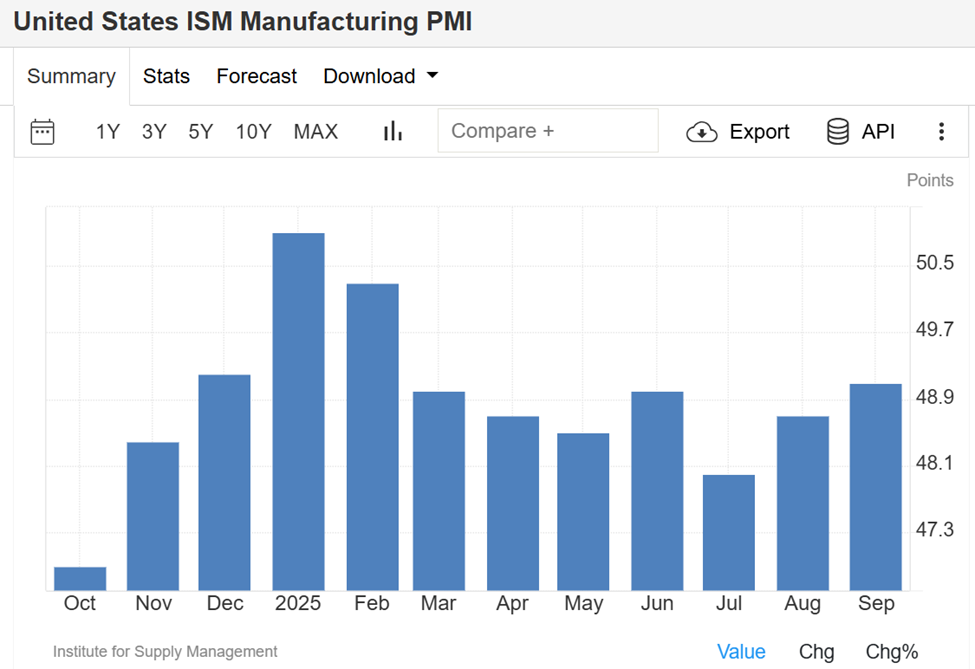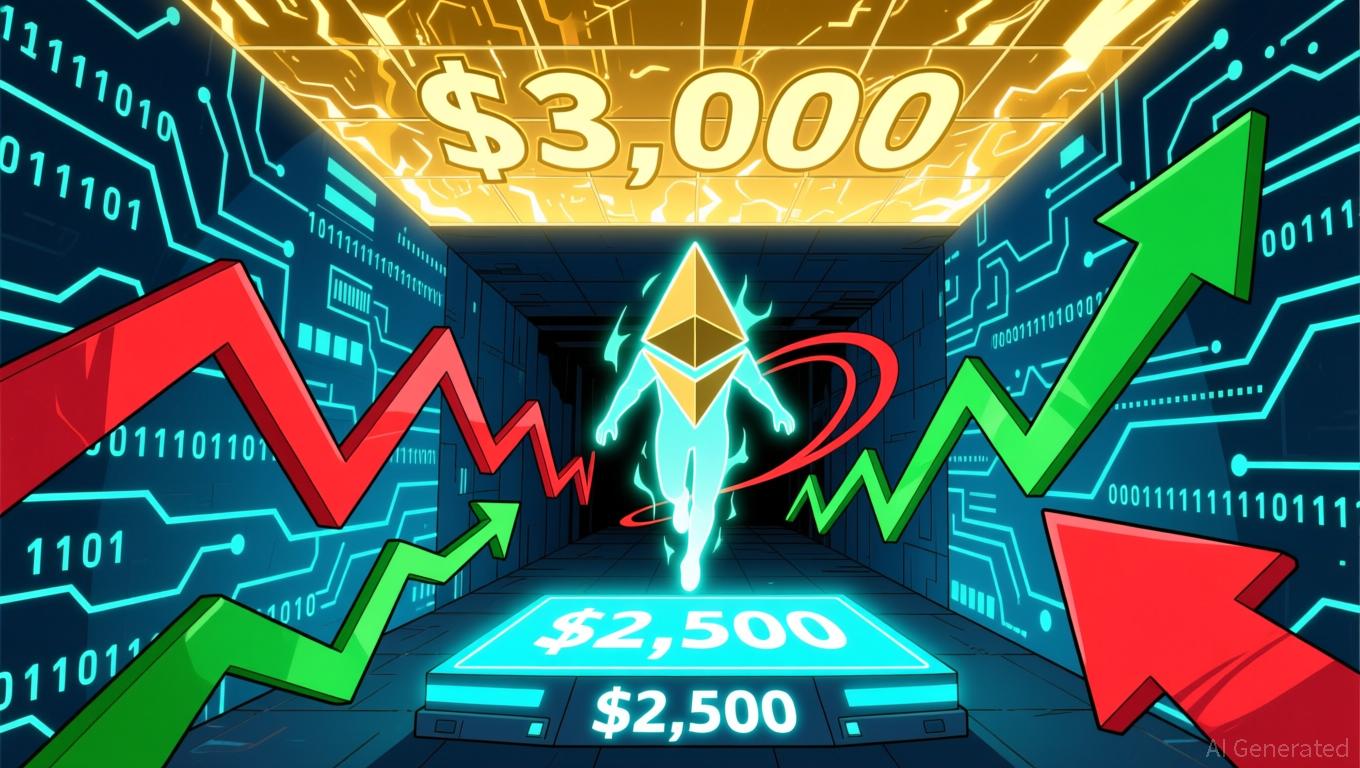Is the ISM Losing Its Power — or Pointing to a 2026 Bitcoin Supercycle?
As macro experts argue over the ISM’s reliability, crypto analysts see deeper implications for Bitcoin’s market cycle. With ISM contraction persisting, many now expect the next Bitcoin peak to come later—potentially stretching well into 2026.
A fierce debate has broken out among macro analysts over the credibility of the ISM Manufacturing Purchasing Managers’ Index (PMI). Experts say this key economic metric is being overused to predict business cycles and Bitcoin market tops.
The clash highlights a growing divide between traditional economic modeling and modern financial conditions-driven analysis, with ripple effects reaching deep into crypto market forecasting.
ISM Debate Splits Macro Analysts as Crypto Traders Reassess the 2026 Bitcoin Peak
CFA Julien Bittel, a macro strategist at Global Macro Investor (GMI), dismisses many of Wall Street’s go-to indicators as outdated or misinterpreted.
“Delinquency rates, ISM, PMIs, job openings, retail sales — none of these are leading indicators…Everything is downstream to changes in financial conditions,” Bittel wrote.
Bittel explained that GMI’s proprietary US Coincident Business Cycle Index integrates forward-moving elements within the data, including early employment signals, and that it began turning higher in mid-2022, months before ISM and other metrics rebounded.
According to Bittel, the labor market’s gradual cooling is actually a positive sign, paving the way for lower rates and renewed economic expansion.
However, macro strategist Henrik Zeberg presents a contrary opinion, calling for caution around treating survey-based indicators as reality.
“ISM is NOT the business cycle or the economy. It is a damn survey! In July 2022, many called for a recession based on the same GMI score. We did not see one. Maybe the score needs calibration?” Zeberg wrote.
Their public disagreement births a wider discussion about how much weight the ISM PMI still deserves. The index measures US manufacturing activity and has remained below the neutral 50 mark for more than seven months, signaling contraction. However, it has not coincided with a full-blown recession.
 US ISM Manufacturing PMI. Source:
US ISM Manufacturing PMI. Source:
ISM-Bitcoin Correlation Suggests a Longer Bull Market Could Extend Into 2026
Historically, the ISM’s moves have also correlated with major Bitcoin cycle tops, a connection first popularized by macro investor Raoul Pal.
NEW: Raoul Pal believes Bitcoin is now following a five-year market cycle, due to an extended debt maturity period and its close correlation with the ISM manufacturing index. 🤔Using an ISM-Bitcoin chart and a 5.4-year SIN curve, Pal predicts Bitcoin will likely peak around Q2…
— Bitcoin News (@BitcoinNewsCom) September 27, 2025
That correlation has now captured the attention of the crypto community. Analysts like Colin Talks Crypto and Lark Davis argue that the ISM’s prolonged stagnation could mean Bitcoin’s bull market will stretch far beyond its typical four-year rhythm.
“All three past Bitcoin cycle tops have broadly aligned with this index,” Colin noted.
The analyst suggested that a cycle top could be mid-2026 for the Bitcoin price if the relationship holds. Entrepreneur and Bitcoin investor Davis agreed, noting that while everyone expects a Q4 2025 peak, the ISM has not shown real expansion yet, meaning this cycle could go way deeper into 2026.
Everyone's expecting this cycle to peak in Q4 this year.But I think we're going way deeper into 2026.Here's why:The classic 4-year business cycle usually have 2 years of expansion and 2 years contraction. That should’ve lined up with a Q4 2025 top.But this time, the ISM…
— Lark Davis (@TheCryptoLark) October 1, 2025
A weaker ISM often implies delayed economic recovery and longer market expansions. Despite current headwinds from tariffs to sluggish global demand, the extended contraction phase may lengthen the broader business cycle rather than end it.
While this could translate to a more gradual, durable uptrend for the Bitcoin price, it warns against expecting an early peak as the 2025–2026 cycle debate shapes into a consequential narrative linking traditional economics and digital assets.
Disclaimer: The content of this article solely reflects the author's opinion and does not represent the platform in any capacity. This article is not intended to serve as a reference for making investment decisions.
You may also like
Ethereum News Update: Ethereum Faces $2,900 Test as $531 Million in Liquidations Threaten $10,000 Ambitions
- Ethereum faces $2,900-$2,700 volatility threshold, with $531M short liquidation risk above and $988M long liquidation risk below. - Bearish momentum intensifies as Binance outflows and $350M daily liquidations accelerate downward pressure below $2,800 support. - Long-term forecasts project $10,000 by 2030 driven by Ethereum 2.0 upgrades, deflationary mechanics, and institutional adoption like BitMine's $11.2B ETH stake. - Aztec's decentralized L2 launch and GENIUS Act regulatory proposals highlight Ether
Bitcoin News Today: "Presale Mania Meets Fed Announcements as Bitcoin Struggles to Break Past $90K Barrier"
- Bitcoin rose above $87,000 amid bets on Fed rate cuts, but faces $90K technical resistance amid liquidity gaps and sell walls. - Presale frenzy driven by limited-whitelist projects like Apeing Whitelist fuels FOMO, mirroring memecoin trends despite declining platform revenues. - Fed policy uncertainty and G20 geopolitical tensions shape markets , while crypto infrastructure faces risks from U.S. chip export policies. - Mixed traditional market performance highlights crypto's precarious path, with ETF inf
Ethereum News Today: Buterin Cautions That Institutional Control Could Undermine Ethereum's Decentralization
- Ethereum (ETH) hovers near key support levels amid institutional dominance and volatility, trading in a $2,500–$3,000 range as of November 21, 2025. - Vitalik Buterin warns institutional control risks decentralization, citing potential favoritism toward high-frequency trading infrastructure over individual node operators. - $1.5B in Ethereum ETF redemptions highlight shifting institutional sentiment, with BlackRock's ETHA Trust recording $53.7M outflows on November 20. - Technical analysis shows 70% prob

ZK Atlas Enhancement: Driving Layer 2 Expansion and Accelerating Institutional Embrace in 2025
- ZK Atlas Upgrade introduces Airbender, a RISC-V zkVM enabling 15,000+ TPS and $0.0001 per transaction, boosting Ethereum L2 scalability. - Modular ZKsync OS and Ethereum liquidity hub integration reduce gas fees by 70% since 2023, attracting Deutsche Bank and $3.5B TVL in ZK ecosystems. - Upcoming Fusaka upgrade (Dec 2025) targets 30,000 TPS while regulatory compliance and interoperability challenges remain key hurdles for institutional adoption.

